
M E M E N T O M O R I
INTEGRANTS
Ana Mercedes Cano
Gabriel Leyva
Alejandra Roldán García
Ivan Pineiro Cancino
PROFFESORS
Diana García Cejudo
Rodrigo Pantoja Calderón
Viviana Margarita Barquero Díaz Barriga
Pedro Mendoza Hernández
Andrea María Parga Vazquez
Roberto David Cevada González
Miguel Anaya Díaz
INTRODUCTION
POSTURE PROPOSAL


How has industry as the cornerstone of modern societies, driven unsustainable explotation of the soil, impacting, life, death, social, environmental, and spatial systems?
How has the extractive industry, positioned as the central axis of modern societies, come to generate such profound and problematic impacts on social, and environmental?
How is it possible that the soil, being the central axis that feeds us, supports us, and enables our activities, is constantly deteriorated by our actions and our indifference to its care?
Human disconnection from the soil
Groundwater extraction and aquifer depletion
Chemical spills from electrical infrastructure
Excavation and replacement of natural soil with building-able soil
Contaminant in ltration into soil layers
Soil compaction from heavy vehicles and machinery
Heavy-metals contamination from the metalmechanic industry
Soil Microoganisms
How have we become so distant from the earth, even in death—our inevitable fate—by choosing to seal our bodies and avoid the natural cycle of decomposition that would return us to the origin from which we came?
Overcrowded tombstones limit space and functionality.
Non-porous pavements impede root growth and mycorrhizal development.
Disconnects the user from the deceased and the soil, disrupting circularity.
Body nutrients interact with soil only through natural burial, a rarely used method.
Non-degradable barrier, obstructing nutrient ow and ecosystem functions.
Chemical leaks and particle release from the co n burial process.
POSTURE

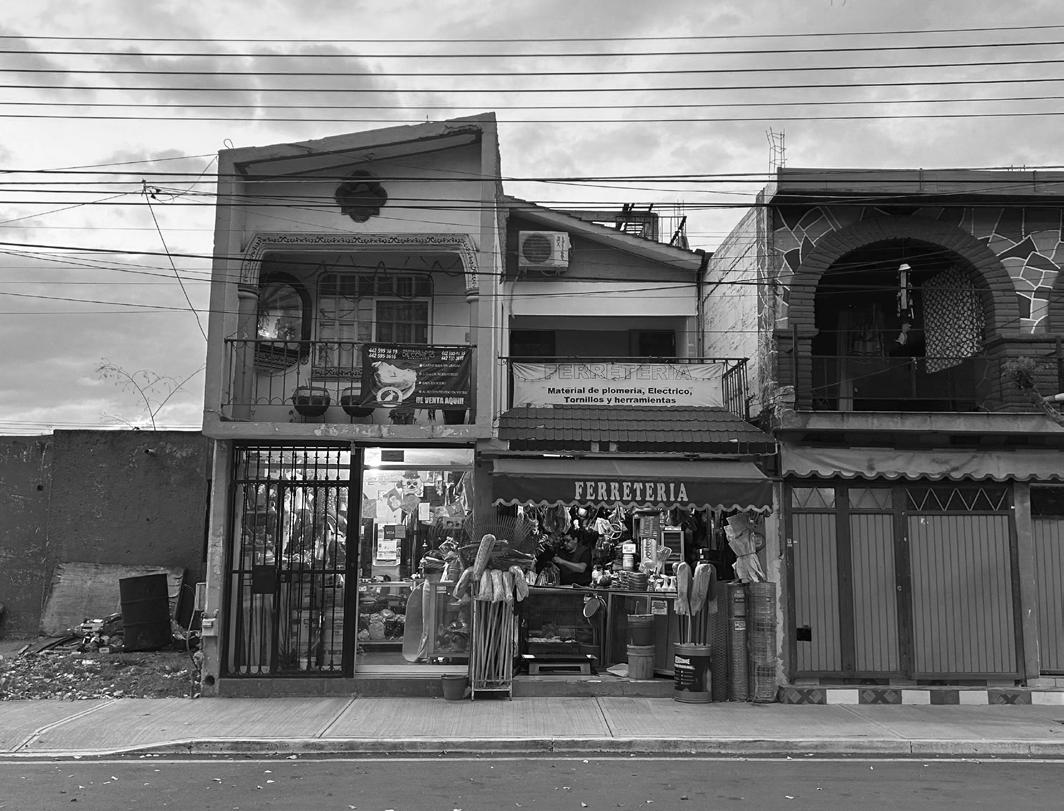



Body is prepped and dressed in a biodigradable gown
A B O U T H U M A N C O M P O S T I N G
The body is set in a vessel on a bed of organic material
The body spends 30 days in the vessel were a process called aerobic digestion unfolds

A soil-like material stained with nutrients, bones and medical devices remains
Medical devices are removed and bones and compost and bones are placed in a machine that breaks everything down
The compost enters the home strech, which is rotaded over the next 30 days. And after that the compost is ready.


In comparison with cremation, human composting
“Reduces carbon emissions by over 400 kilograms per body”
LEGAL FRAME
In Mexico, the disposal of corpses is regulated by various norms and laws at both federal and state levels. In general, the main provisions include:
Cemeteries: Corpses must be buried in legally established cemeteries. Cemeteries are regulated by municipal authorities, which must grant the corresponding permits.
Cremation: Cremation is also possible, which involves reducing the corpse to ashes through a controlled process in authorized crematoriums. The resulting ashes can be placed in columbariums, deposited in a grave, or given to the family for preservation.
Donation to Science: Another option is the donation of the body to research institutions or medical schools, where the corpse can be used for scientific purposes. This must be previously authorized by the person or their family.
Specific regulations:
NOM-087-SSA1-2002 regulates the management of biological-infectious waste, which includes aspects related to the handling of corpses when they carry dangerous pathogens.
The General Health Law and state also govern the processes of burial, exhumation, cremation, and transportation of corpses. Article 348: It establishes that human corpses and remains must be buried, cremated, or incinerated in places that meet the sanitary conditions dictated by the Ministry of Health and in accordance with official Mexican regulations.









METABOLICAL IMPUTS

















CUSTOMS













What happens when we make ourselves available to the earth and become a resource for it?

METROPOLITAN ZONE QUERETARO






NORTHERN ZONE QUERETARO


FELIZ OSORIO DELEGATION






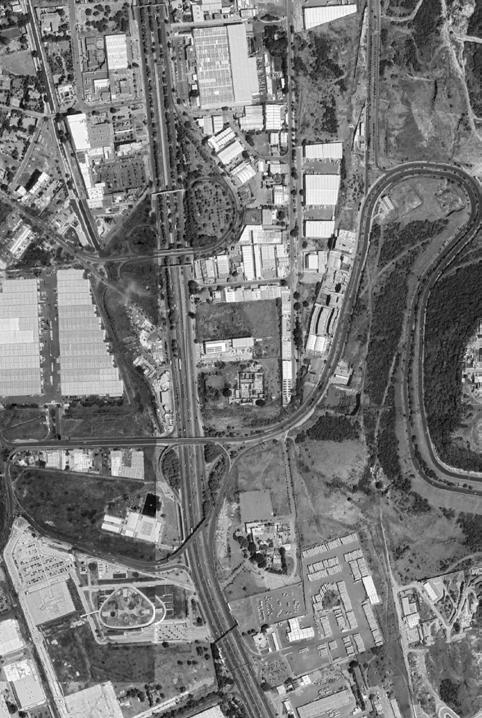



TOPOGRAPHY



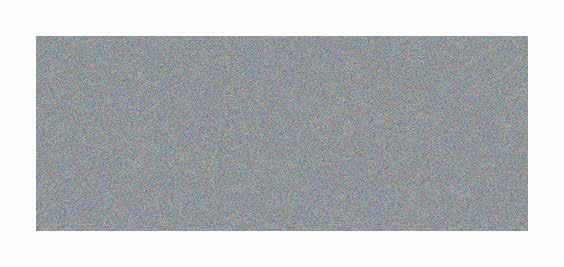

ENERGY, PREEXISTANCES AND INFRAESTRUCTURE





Residential area compromised

Cerro del Tambor
Electrical substation.
Energy sent mainly to industry






According to OMS, each individual should have access to
SQUARE METERS
of public space to ensure a good quality of life
It was estimated that the 35,268 inhabitants of the Félix Osorio only have of public space to available per persson SQUARE METERS 0.85
Felix Osorio Delegation
CurrentPublicSpaces
InFelixOsoriothereare only0.82m2ofpublicspaceandgreenareas avaiableperinhabitant







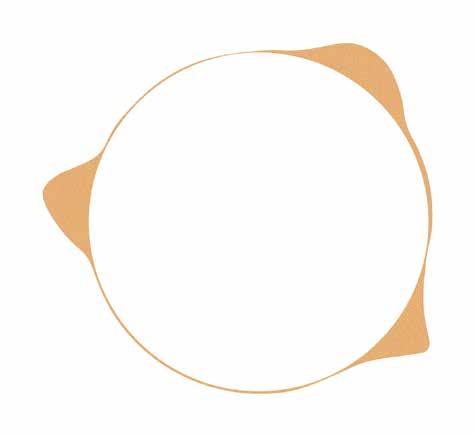


Minor Comerce Pedestrian Inhabitants Students
Industrial Workers
The site is surrounded by various commercial establishments, primarily dominated by food services. Although a few entertainment venues are present, an analysis of the public space in the area revealed that only two spaces are designated for recreational activities.
The Benito Juárez Industrial Park is a major employment hub, creating a significant demand for access via public transport for hundreds of workers. However, the infrastructure for this transport is in poor condition. On the transversal axis to the area under analysis, we have bus stops on both sides, which influenced our decision to place one of the access points for the intervention in this location.
M A P O F A R O M A S
Around the site, we can perceive a concentration of aromas originating from various sources, revealing a great deal about the conditions of the area. The air currents on the site flow from east to west, carrying this variety of aromas into the residential and commercial areas, resulting in an unpleasant experience for users.
W A L K A B I L I T Y
Roundabouts, by design, are primarily intended for vehicular traffic, and in this case, they prove to be unfriendly to pedestrians. Their function is to ensure the continuous flow of vehicles from 5 de Febrero or the industrial park, often resulting in high speeds and a focus on traffic efficiency, making the roundabout nearly impossible for pedestrians to navigate.

Apart from the growing necessity of giving back to the soil in a meaningful way, we also face a new urban challenge: the mortality rate and the capacity of existing burial infrastructure are not proportional. It has become a luxury to have a final resting place. There is no more space, as is the case with much of the urban growth occurring today. Burial infrastructure is saturated, and people pay high rates to keep their deceased in a designated place. Despite knowing that we are running out of land, we continue to claim it, even in death, with large tombstones that declare we will not leave, not even after we’re gone.

Viewing Services
From $13,000 - $94,000 MXN
Inhumation and Burial
From $29,000 - $180,000 MXN
Cremation
From $7,500 - $130,000 MXN
Niches
From $22,500 - $70,000 MXN
34 Deaths every 3 days in Querétaro Mortality rate 7/1000
10 deaths
Félix Osorio + Epigmenio González + Benito Juarez Industrial Park
24 deaths Rest of the ZMQ
Cemetery
Funerary
Crematorium

“Environmental and social impact”







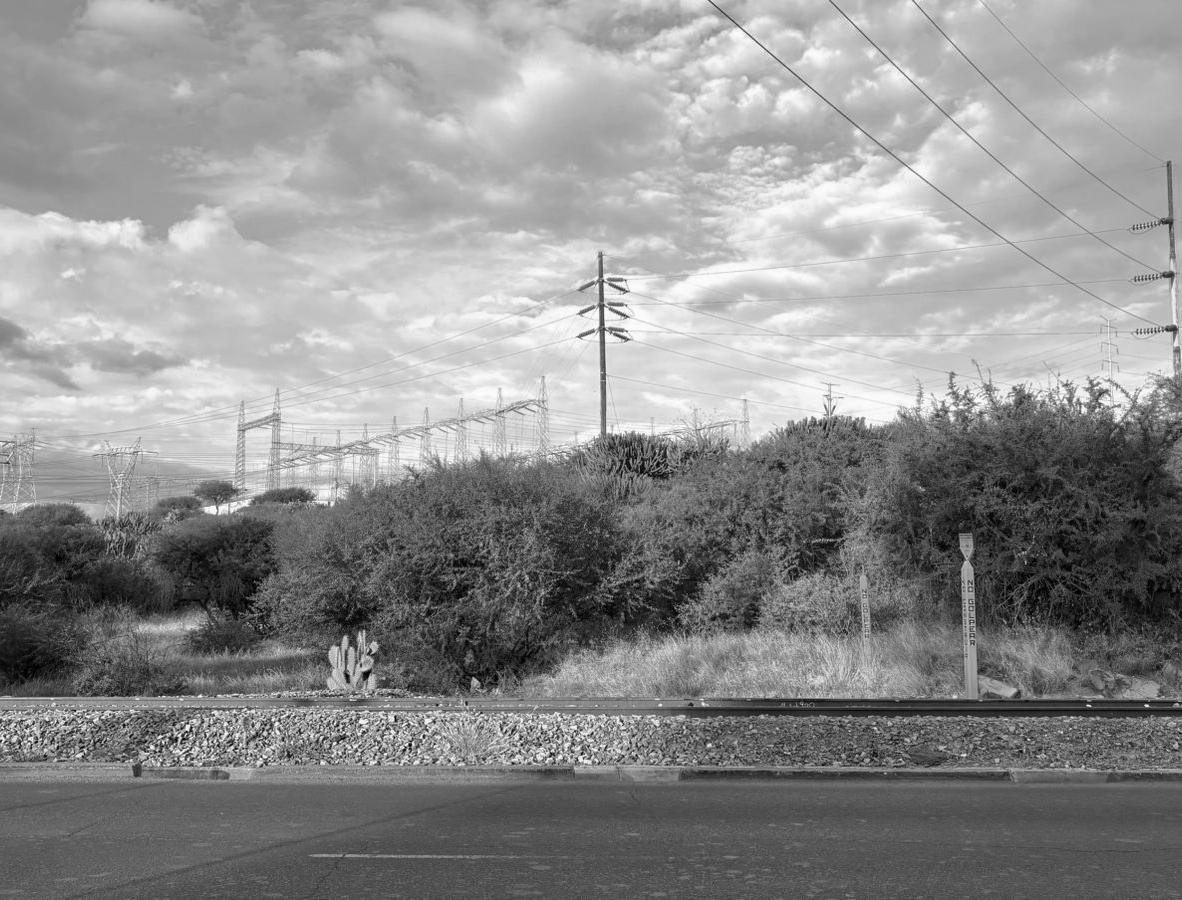
Acknoledgment of the Soil Reconnection to the Soil
Acknoledgment of the Soil Reconnection to the Soil
Integral Natural Coexistence Ecological Morality
Integral Natural Coexistence Ecological AcknoledgmentMorality of the Soil Reconnection to the Soil
Acknoledgment of the Soil Reconnection to the Soil


VOIDS







PATHWAYS ACCESS
Define 2 geometries and axis to join them to generate a spatial base
DOMINANCE OF VEGETATION PER GARDEN
Burial Grounds Aromatic Pollinator
DOMINANCE OF VEGETATION PER GARDEN
Endangered Endemic
Preexistent Endemic
Desertic
Pollinator Desertic
The creation of a grid from a radial organization

DENSITY TIPOLOGIES
Human Care

Through the spiral the water is distributed along the park
Human Composting Centre
1:3000 Medium Density High Density
Market and Community
Ecumenic Plaza
STRATEGIES AND PROGRAM PLACING








LAYERS OF LANDSCAPING AND PROGRAMMING

ELEVATION PROFILE
PREEXISTENT VEGETATION


DESERTIC GARDENS AROMATIC GARDENS
ENDANGERED ENDEMIC


POLLINATOR GARDENS

ARQUITECTURAL TIPOLOGIES, ROUTES AND BURIAL GROUNDS
AROMATIC GARDENS
DESERTIC GARDENS



ARQUITECTURAL TIPOLOGIES, ROUTES AND BURIAL GROUNDS


A P P R O A C H T O
L A N D S C A P I N G “·
For the conceptualization and strategies to organize and plant the program of a complex landscape project, we were heavily influenced on Roberto Burle Marx, a prominent Brazilian landscaper, architect and artist. His designs often followed organic forms, drawing inspiration from nature and the topography of the site. This helped spaces feel more fluid and natural. He promoted the use of native species and landscaping techniques that respected the environment, encouraging biodiversity and ecological balance.

AQUATIC VEGETATION


POLLINATOR GARDENS


DESERTIC VEGETATION

AROMATIC VEGETATION


ENDEMIC VEGETATION

EXISTING VEGETATION

Park visitants
Mourning Family Councelers
Administration/clerks
Cleaning/Maintanance Personal Nightstand
Human Compst personal
Work shi begins
Work shi begins
Tasks
Work shi begins
Preparations for accompanying the families
End of shi
Arriving: Stroll through the park
Break (Stroll through park)
Emotional support
Viewing service if desired
Passage through the Memorie Gardens
Contemplatin of the park
Work shi begins
Luncnch Break (Market) Shi ends
Tasks
End of shi
Work
Setting up the hold
The rst bodies are received/prepared
Morning run/Visiting family
Arriving:
Heading to the "burial" point
Start of ceremony
Recreation/Strolling/Visiting family
Finalization of ceremony Stroll through the park
Lunch and recreation
Strolling through market eating
Admin/legal procedures
Closign admin issues
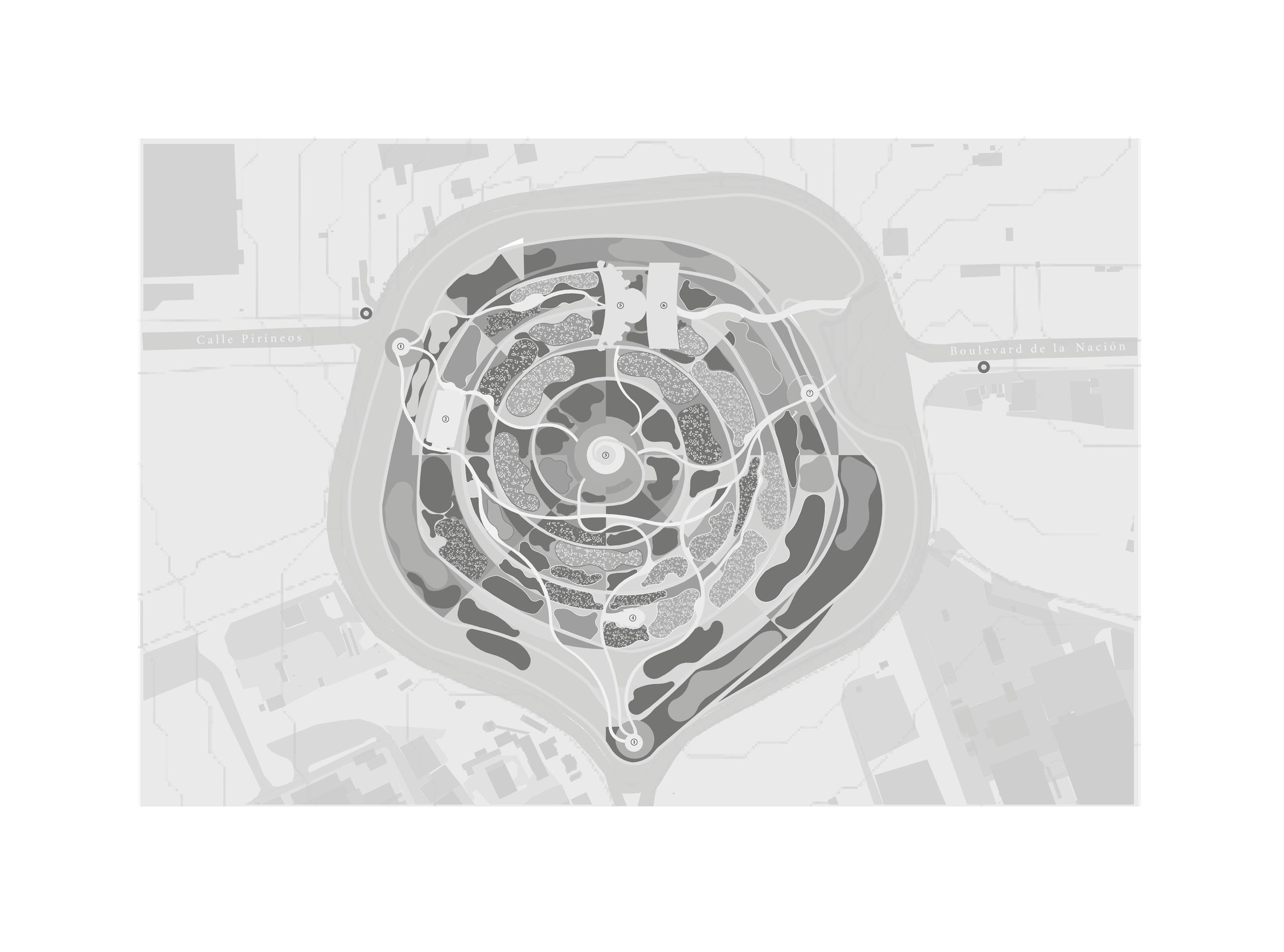

























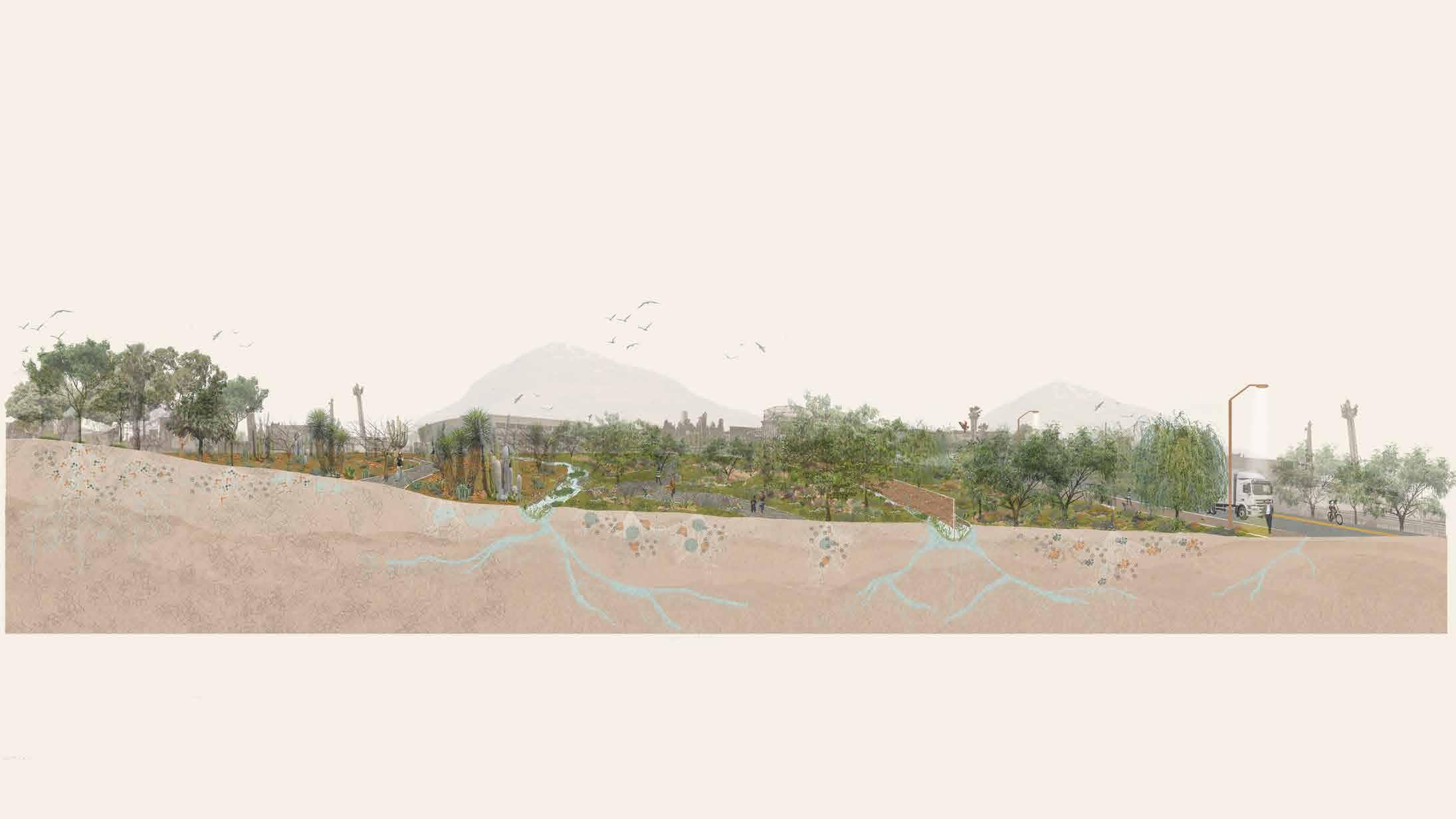



ROUTES AND USER´S EXPERIENCE




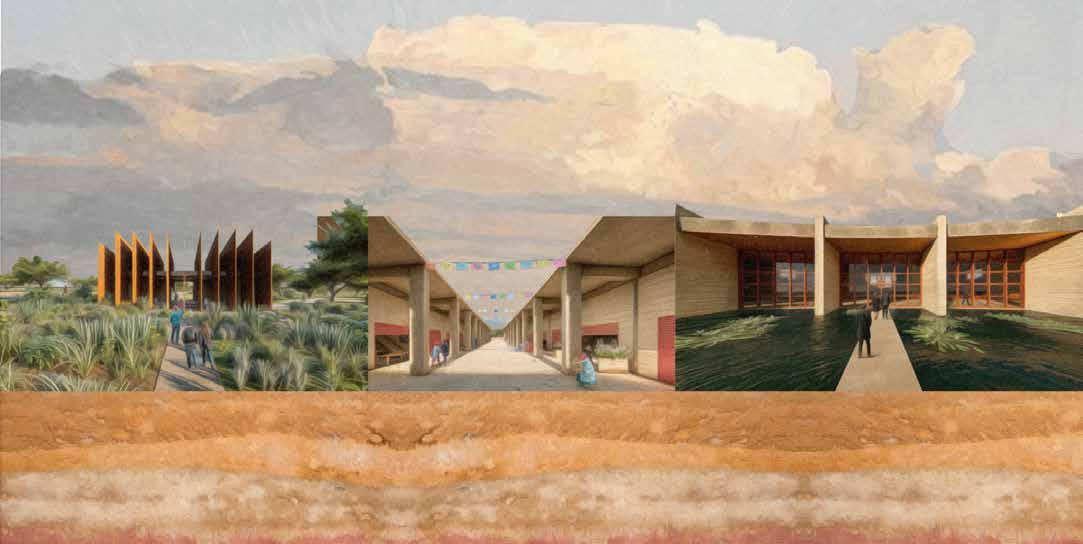

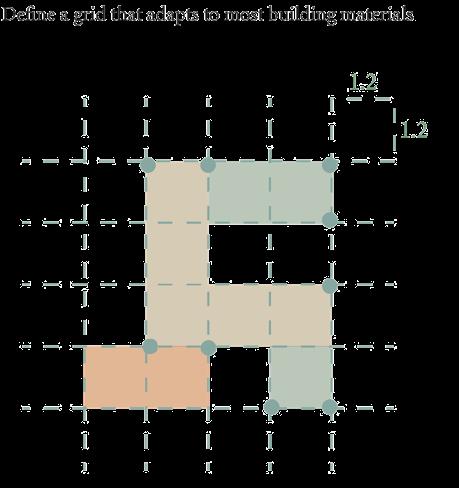
DESIGN PREMISES FOR ARCHITECTURAL TIPOLOGIES




MATERIALITY PALETTE



Visitors are welcomed through three distinct entrances: two dedicated exclusively to pedestrian circulation and a northeast access for vehicular traffic. The entrances are primarily composed of corten steel panels, which open to receive visitors, aiming to engage them and shift their mindset in anticipation of the experience ahead
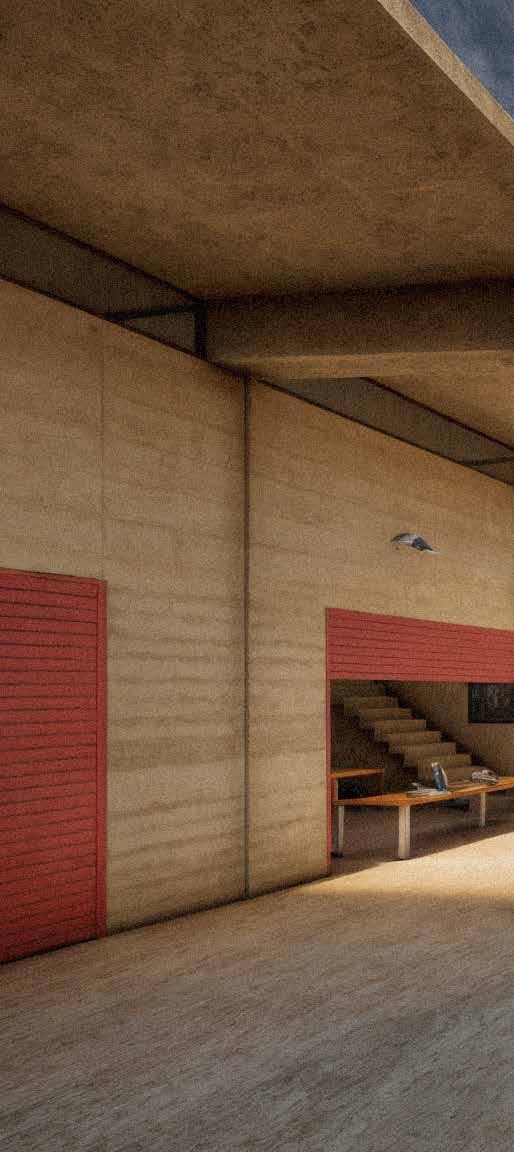

MATERIALITY PALETTE



A linear market is proposed near the west pedestrian access, functioning as a community gathering center where funerary and cemeteryrelated products are sold. This market not only supports the local economy by promoting small businesses but also serves as a cultural hub for the community, especially during significant events like the Day of the Dead. By creating a dedicated space for the sale of traditional items, such as candles, flowers, and artisanal offerings, the market fosters a deeper connection to cultural traditions, allowing families to come together in preparation for these meaningful celebrations.

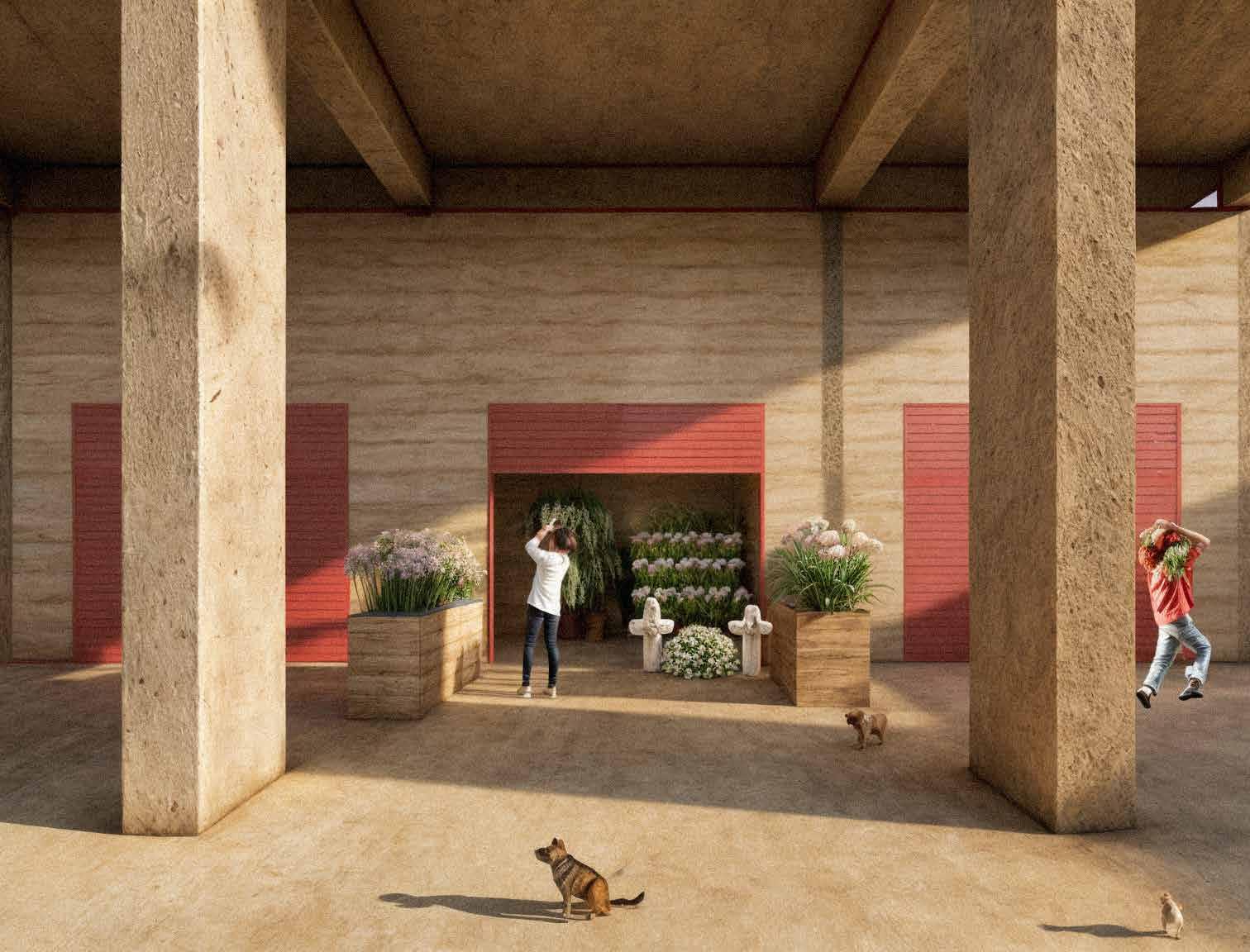


The ecumenical plaza is centrally located within the project, positioned at the highest point of the topography to offer a commanding view of the surrounding landscape. This intentional placement not only emphasizes the plaza as a focal point but also aims to transport users along carefully designed routes, allowing them to engage with the environment and gradually immerse themselves in an experience of connection and reflection.
The plaza functions as a versatile gathering space, where diverse social and cultural dynamics can unfold, from community gatherings to moments of quiet contemplation. Visitors are encouraged to pause and reflect, with the design elements promoting introspection and a deeper understanding of their relationship with the natural world.
Scale 1:300
MATERIALITY


The space fosters a sense of unity, both with the environment and among the community members who visit. It invites them to reconnect with the landscape and, most importantly, to acknowledge the central theme of the project: the soil. By emphasizing the importance of the earth beneath them, the plaza seeks to inspire a sense of stewardship and awareness of the natural processes that sustain life, grounding the visitor in the project’s environmental and ecological objectives.








The site features a Catholic chapel designed to serve the surrounding community, where 95.3% of residents identify as Catholic. The chapel’s form is sculptural, with inclined rammed earth walls that create a dynamic spatial experience. As visitors approach, the walls narrow at the entrance, creating a sense of compression, and then open up at the far end of the chapel, offering a feeling of release and openness.
The chapel is composed of a central nave, a storage unit, and three supporting altars located along the lateral walls.
Scale 1:150
Light plays a crucial role in the design, with positioned openings allowing natural light to filter into the building, guiding visitors along their path, building an atmosphere.
Sección Construcción 1:200
Alzado Oeste 1:200 Scale 1:150




Indirect relation
Human Care
Water mirror
Human Care Admin
H.C Bathrooms
Counseling
Transtional space
Funeral Viewing
Gardens
Transtional space
Halls
Preparation room
Bathrooms Direct
Vessel room
Machine room
Storage room
Post Cleaning room
Trituration station
Compost Storage
WC and lokers
Breakroom Reception Administration Reincorporation process process
Lobbies
Human Care
MATERIALITY PALETTE





The Human Care Building consists of two independent nuclei, connected by a central courtyard surrounded by vegetation, creating a tranquil and reflective environment. The first nucleus is dedicated to funerary and wake services, offering a supportive space where families are encouraged to process grief and say their final goodbyes.
This area includes four wake rooms and four counseling spaces, where families are accompanied by psychological and grief counseling professionals. Additionally, the first nucleus houses four administrative offices and service areas to ensure smooth operation.
The entrance is framed by corten steel, which leads to a memory hall where the names of the deceased are honored, creating a space of reflection and remembrance for those visiting the center.
Scale 1:150





The second nucleus is dedicated to human composting, a sustainable and innovative approach that accelerates the natural decomposition process. This facility has the capacity to receive up to eight bodies per day, and after an eight-week process, the remains are transformed into compost, which can be reintegrated into the soil.
This practice not only promotes ecological sustainability but also symbolizes the return of life to the earth, aligning with the project’s overarching focus on nature and regeneration.
Thermal mass for temperature isolation
Removal of rainwater into water collection systems
Humidity control atmosphere




Wind channeling for temperature regulation
Landscape environmental atmosphere
atmosphere






Panel de vidrio templado
Enladrillado en petatillo con lechada de cal cemento Impermeabilizante total plus comex para años
Entortado de mortero tolteca proporción
1:3 Relleno de tezontle con calhidra proporción 1:20
Losa nervada de casetón recuperable
Trabe de concreto armado
Trabe secundaria
Columna de concreto armado
Enladrillado
Firme de concreto
Cadena de desplante
Zapata Aislada

ELECTRIC INSTALLATIONS
HYDRAULIC INSTALLATIONS



A er each process behind the Human Composting. 1m3 of enriched soil is reintegrated into sterile soils, improving the conditions of up to 3 times its volume.
What do we really want our Inheritance to be?
2215 kg of Carbon Dioxide
Captured in 50 years because of the transition of 1 person
937.5 kg of Oxygen produced in 50 years because of the transition of 1 person


I N V E S T M E N T R E T U R N
“Ecologies as an investment”
Ecologies and environmental practices are conceived as investments, with the soil as the central element. The return on investment is reflected in an improved quality of life, achieved through increased oxygen production facilitated by the complex.

Kg of CO2 captured yearly

Kg of O2 Produced yearly
50 years later 1.2M kg of CO2 get captured yearly
= Emissions of 1310 vehicles
adding 32M kg of CO2 sequestration in 50 years
50 years later 518k kg of O2 are produced yearly
= breathable air for 1800 people
adding 11.2M kg of O2 production in 50 years
With every life transformed , you not only celebrate the memory of your loved ones, but you also leave a legacy for the planet. You are also part of the biodiversity chain, providing shelter, and food.
Disciplines Reach
Disciplines Reach


Permaculture

Metaphisical studies
Metaphisical studies
Religious Studies

It is essential to recognize the complexity of the proposal, as it aims to operate through a multidisciplinary approach. The project addresses and mitigates a range of topics, from religious themes to permaculture, seeking a holistic approach to the soil. It responds to the complexity of the metropolis and the diverse layers that constitute it.
Faith and death
Faith and death
Faith and grief
Faith and grief
Psicology
Religious Studies
Psicology
Ecopsicology
Ecopsicology
Human dynamics
Human dynamics
History Art History
History Art History
Antropology
Antropology
Sociology
Sociology
Economic
Economic
Ecosystems and the Human psyche
Ecosystems and the Human psyche
Nature + Beliefs
Nature + Beliefs
Human’s conection with nature
Human’s conection with nature
Rememberance
Rememberance
Death
Culture diferences in death rituals
Culture diferences in death rituals
Death rituals of old City dwellers leaving urban spaces post-death
Cementery goods commerce
Cementery goods commerce
Death care industry
Death care industry
Environmental systems
Environmental systems
Environmental Science
Environmental Science
Landscape
Systems thinking
Systems thinking
Restorative desing
Restorative desing
Closed loop systems
Architechture
Landscape
Architechture
Permaculture
Permaculture
Spatial frameworks
Architechture
Architechture
Urban planning
Closed loop systems Natural systems desing
Dirt Waste = Oportunity
Dirt Waste = Oportunity
Natural systems desing
Compositing
Compositing
Sustainable desing
Sustainable desing
Necropolis
Urban planning Necropolis
Architechture and solitude
Architechture and solitude
Architechture and holiness
Architechture and holiness
Green Urban Spaces
Green Urban Spaces
Celebration of Urban Fabric
Celebration of Urban Fabric
Celebration of cycles ending - decay Spatial frameworks
Celebration of cycles ending - decay
Dimensions Disciplines Reach
Metaphysical inquaries
Human dynamics
Religious Studies
PsicologyEcopsicology
History Art History
Antropology
Sociology
Economic
Environmental Science
Environmental systems

Faith and death
Faith and grief
Ecosystems and the Human psyche
Human’s conection with nature
Rememberance
Culture diferences in death rituals
Nature + Beliefs
Death rituals of old
City dwellers leaving urban spaces post-death
Cementery goods commerce
Systems thinking
Landscape
Architechture
Permaculture
Architechture
Spatial frameworks

Death care industry
Restorative desing
Closed loop systems
Dirt
Waste = Oportunity
Natural systems desing
Compositing
Architechture and solitude
Sustainable desing
Urban planning
Green Urban Spaces
Necropolis
Soil
Architechture and holiness
Celebration of Urban Fabric
Celebration of cycles ending - decay
Antropology
Environmental systems
Environmental
Landscape
Architechture
Permaculture
Spatial frameworks
Architechture
Urban planning
Metaphisical studies
Religious Studies
Psicology
Ecopsicology
Nature + Beliefs



Human dynamics
History
Art History
Antropology
Sociology
Economic
Human’s conection with nature
Rememberance
Death rituals of old
Culture diferences in death rituals
City dwellers leaving urban spaces post-death

Cementery goods commerce
Death care industry


Environmental systems
Environmental Science Systems thinking
Restorative desing
Closed loop systems
Landscape Architechture
Permaculture

Dirt
Natural systems desing
Waste = Oportunity
Compositing


Spatial frameworks
Architechture
Urban planning
Sustainable desing
Necropolis
Architechture and solitude
Architechture and holiness
Green Urban Spaces

Celebration of Urban Fabric
Celebration of cycles ending - decay




The proposed complex serves as a multifunctional space that harmoniously blends community gathering, spirituality, environmental consciousness, and innovative approaches to end-of-life care. Through its integration of nature, thoughtful architectural design, and sustainable practices like human composting, the complex not only addresses the emotional needs of individuals and families but also contributes to the ecological health of the planet. By choosing to donate one’s body to human composting, individuals can have a lasting positive impact on the environment, as their remains are transformed into nutrient-rich compost that nourishes the soil, supports plant life, and fosters a regenerative cycle. This practice aligns with the project’s core values, offering a meaningful way to reconnect with the earth and contribute to its preservation for future generations




